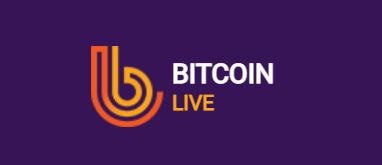Factor Member Webinar October 2025
Recorded Live October 16, 2025
Overview
- Q&A
- Do you have any plans to retire? 2:17
- The recent erratic behavior of the stock market made you comment that it is typical behavior at market tops (the market refuses to go up, but people want it to). Please elaborate. 4:24
- I'm curious about the MME/MES spread that Peter has talked about, which is forming a long-term potential H&S. It is getting close to breaking out today. Is this something he's still looking at? Also interested in trying to manage a position on such a long-term chart...7:43 & 12:57
- Would Peter be able to run through his typical daily, weekly, quarterly, etc. routine? 8:34
- Want to know how to aggressively decrease risk from 70 bp to an average 20 bp within a few days of the trade. 14:05
- What do you recommend the minimum nominal capital be to be a part-time futures trader? 16:42
- How are you feeling these days? Are you getting better little by little? 19:11
- Updated thoughts on BCI 20:40
- A question for the newer traders: How would you start over? Once you've done enough paper trading and have a clear plan, how would you begin? Account size, asset type, etc. 22:42
- Does the MBT chart setup for short below lows? 24:33
- Can you go through your coffee trade? 26:42
- What are your thoughts on improving community engagement and interaction? Maybe a Discord?31:37
- Would love to hear more about your current thoughts on KC. Could you comment on RC London coffee being where the trade is executed, vs the KC chart looking better but being harder to trade? 34:56 (KC Wheat Chart 33:19)
- What are your risk parameters for total composite exposure? I know you like to limit exposure to correlated markets, but can you talk about the total composite open risk and what happens if you reach that limit while another trade is setting up? 36:46
- I am struggling to move my stops when a trader is going well. As an example, 6CZ5: could you go over it and comment on your logic for moving the stops post-breakout? 40:30
- Could you also talk through how to look at continuous versus active month charts? Like, for example, in KC-057, it's a clear H&S on a weekly basis. Put you don't see a clean pattern on KC-202512. Maybe to a lesser extent KC-202603. So how should you think about that from a classical charting perspective? 46:23
- What is the 057 futures contract? Is that the most active contract, or is it continuous? I don't see it on Trading View. 48:29
- Have you ever worked with or discussed markets with Larry Williams? 50:47
- Just wondering how much influence ADX has on you for any particular trade? 52:34
- Could you share your views on copper, platinum, and palladium at the moment? 54:21 (Peter also talks about silver)
- What is your view on $BTC as we currently trade a tad below $109k? 1:01:25
- Would you recommend any different approaches in trading (e.g., risk management, sizing, etc.) when trying to grow an account size vs. when it has reached a level that is comfortable and manageable for ongoing trading activities? 1:07:31
- Do you personally update your spreadsheet trade summary and how often do you review it? 1:11:00
- Email jolleen@peterlbrandt.com for a metrics template
- Can Peter review his trading in $BABA? Stock broke above $120 in Feb 2025 but quickly reversed. It broke above that level again in Sep 2025. Did you re-enter the trade? 1:13:10
- Do you think IBKR is safe? We have 80 percent of our money in that. 1:14:15
- Have you collected enough statistics to share on your trading based on weekly charts? So far, what's the advantage of trading on weekly charts? 1:15:34
- Has Silver broken out on the Quarterly 45-year pattern? Did you get out of your most recent 5-day console silver pennant long? At what price will people sell all their silverware? What will derail the parabolic advance in metals? 1:18:13
- Do you ever move stops to breakeven arbitrarily, or are you always picking a technical point on the chart? 1:20:07
- Gold just printed 4300. Has it gone parabolic/vertical/blow off top stage? Is it correct to say that the gold market is untradable right now? From a swing-trading perspective, one would need to wait for an identifiable pattern before even considering a position. 1:22:50
- Hypothetically, if you are only able to use market orders to trade breakouts, will it still be profitable, even though at a reduced profit factor? 1:27:22
- Thoughts on Solana? 1:28:23
- Could you walk through an example of re-entering a trade after it stopped you out the first time? 1:28:46
- Any comment on 30-year bonds on the December daily chart? You have made some great long-term equity calls in the past $AVGO, $NVDA - why not do more? 1:32:14













